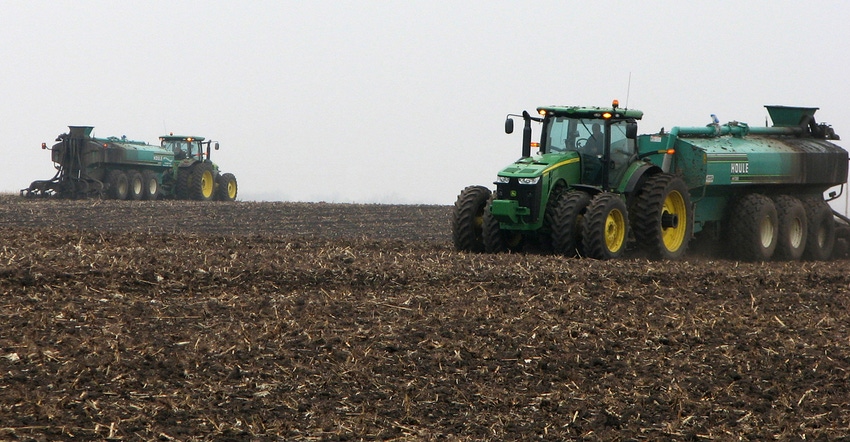October 11, 2017

Manure is an important resource that can help you build healthy soil by improving soil tilth, water-holding capacity and soil organic matter. The Coalition to Support Iowa’s Farmers offers these reminders to help you maximize the value of manure fertilizer while maintaining good standing as a neighbor and as an environmental steward. Iowa State University Extension ag engineer Dan Andersen also provided some of the following tips.
• Measure manure value. Get manure tested for moisture level as well as nitrogen, phosphorus and potassium content. Use the results to determine application rates for fields as you consider the nutrient needs of next year’s crop. Keep in mind what your manure nutrient management plan from the Iowa Department of Natural Resources allows for application rates.
• Strive for uniform application. Calibrate solid-manure spreaders and liquid-manure tanks before application to ensure uniform nutrient distribution across the field. Calibrating manure application equipment takes a little time, but it helps meet the correct application rate and makes manure nutrients more effective and efficient.
Take time to inspect and do maintenance on equipment. This helps protect employees and reduces chances of equipment malfunction that can lead to over- or under-application. A malfunction can also cause serious damage to equipment or cause a manure spill.
• Follow separation distances. Meet or exceed the manure application rules and setbacks for each field. All animal feeding operations, regardless of size, are subject to manure application separation distances from designated areas. Those include wells, sinkholes, waterways, tile intakes and other sensitive areas.
• Modify your application rate. Having a farm map showing the different fields and application rates in fields helps keep everyone on the same page and ensures the job is done correctly. Also, note soil and weather conditions throughout the application season and plan accordingly. If rainfall or storms are imminent, delaying application may be necessary. In other cases, it might mean ensuring the manure is either injected or incorporated before the storm reaches the field. Remember to wait for soil temperatures to cool to 50 degrees F before applying. That helps keep nitrogen in manure with high ammonium content there until next spring.
• Communicate with neighbors. Visit with neighbors about your manure application plans and ask if they have any family gatherings or events planned during your estimated application time frame.
• Keep thorough records. Document when and where you apply or handle manure. At a minimum record the date, field, amount and method you applied. These records are required and can be useful as you assess how your crops perform next year and help you tailor manure application decisions to your farm.
• Update your manure management plan. Remember to submit your annual, updated plan to the Iowa Department of Natural Resources.
• Safety first. Always put you and your employee’s safety first. For workers and animals, check the barn ventilation system every day before hauling manure and pumping pits. Are the fans all working? Are wind speeds adequate? If pumping from a manure pit, use a pump-out curtain to help keep hydrogen sulfide away from workers. Once agitation has started, avoid going into the barn. If you are working near agitated manure, wear a hydrogen sulfide monitor to make sure conditions are safe, and watch out for cool evenings when air gets still.
Make sure your equipment’s reflector and hazard lights are working properly before heading out on the road. During the hauling and application season, check to be sure these are visible, and when necessary, clean the signs for slow-moving vehicles. It’s a good idea to pre-map your routes from farms to fields, looking to avoid blind corners, busy roads and soft shoulders.
If you have questions about regulations or how to initiate communications with your neighbors, contact CSIF at supportfarmers.com or call 515-225-5531.
Sources: CSIF and Iowa State University.
You May Also Like




